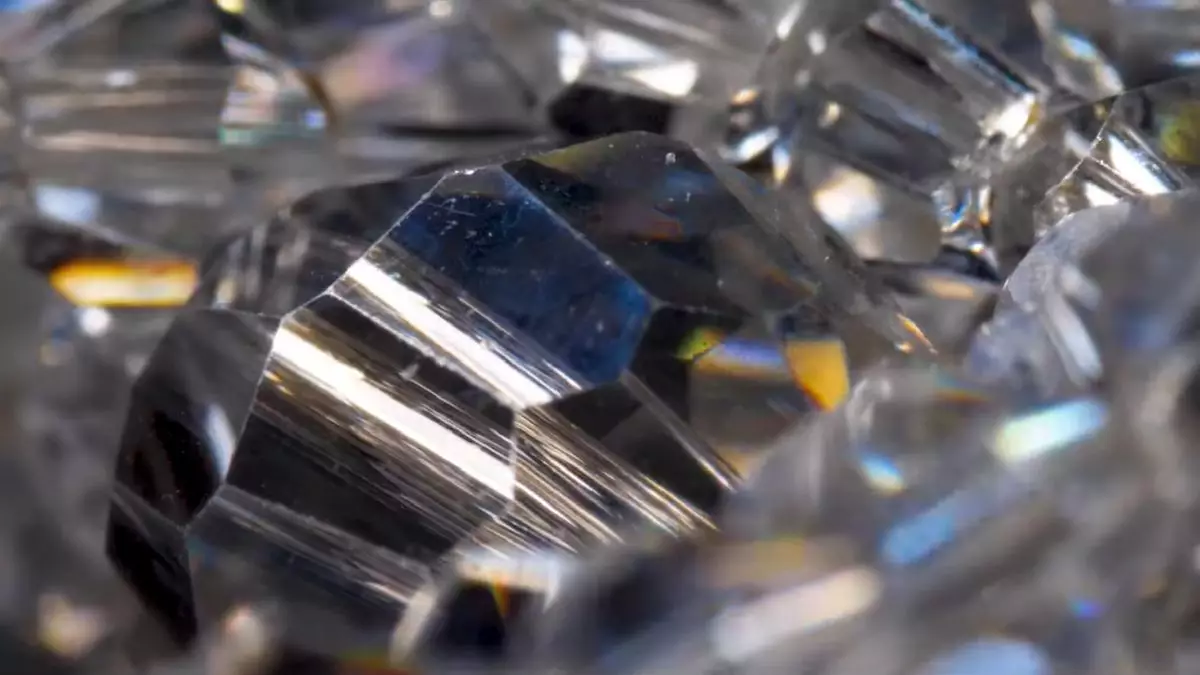Diamonds have long been associated with luxury, celebrity culture, and marital commitment, often showcased in heist movies and extravagant parties. However, a fresh perspective has emerged, suggesting that the diamond’s role could extend beyond just opulence. Those concerned with sustainability and ethical sourcing may find it particularly appealing that the latest advancements may spotlight the potential of ethically sourced diamonds in technology, especially in enhancing semiconductor cooling systems. This innovative approach aligns excitement for shiny objects with a more responsible and accountable mindset.
At the heart of this technological breakthrough lies a company named Akash Systems, which is making headlines with its ambitious plans to scale diamond-cooled semiconductors. Their recent announcement of an $18.2 million funding initiative from the CHIPS Act, combined with an additional $50 million allocated through federal and state tax credits, reveals significant backing to pursue this concept. While specific details regarding their cooling methodology remain undisclosed, this sense of mystery adds intrigue to the possibilities.
The foundation of their technology rests on the assertion that synthetic diamonds fused with conductive materials such as Gallium Nitride can significantly enhance the thermal efficiency of semiconductors. Diamonds are reputedly five times more thermally conductive than copper, presenting an opportunity for innovative advancement in the efficiency of electronic devices. Unlike traditional conductive materials, diamonds do not conduct electricity, theoretically allowing these new semiconductors to utilize the best attributes of both realms. This advanced fusion proposes that devices can operate conventionally while dissipating heat more effectively, which would enable chips to draw increased power and perform under cooler conditions.
What kind of improvements can consumers expect from this diamond-cooling technology? Akash Systems estimates a remarkable 20°C reduction in hot spot temperatures. They also foresee a decrease in fan speeds by as much as 50%, alongside a potential 25% increase in overclocking capabilities—effectively doubling the longevity of servers and reducing thermal throttling. While these figures come with a need for skepticism until results are validated, they certainly paint a compelling picture of a future filled with high-performance devices.
Moreover, the implications of this technology stretch beyond the realm of everyday electronics. Akash Systems claims that their diamond-enhanced chips could revolutionize satellite communications, promising to deliver five to ten times faster data transmission rates and increased reliability—all within a form factor that is 50% smaller than current technologies allow. The prospect of such advancements could redefine the landscape of various sectors dependent on rapid and reliable communication.
However, amidst the excitement surrounding Akash Systems’ diamond-cooling tech, challenges abound. The actual disbursement of funding under the CHIPS Act remains uncertain, compounded by the ever-changing political climate. The investment landscape can quickly shift, particularly with a new U.S. administration poised to take office. For instance, President-Elect Donald Trump has previously expressed skepticism towards the CHIPS Act, placing pressure on companies to secure contracts swiftly. The fate of diamond-cooled semiconductors could therefore hinge significantly on external factors beyond technological innovation.
Overall, while potential is high, the road ahead will likely be strewn with regulatory hurdles amid a fast-evolving industry. As researchers and developers strive to realize the full capabilities of diamond-cooled technology, one thing remains clear: the integration of ethical considerations into cutting-edge developments has a dazzling allure that reflects a brighter future. As the technology matures, consumers and industries alike await to see if their gadgets can impress not only for their performance but also for their ethical origins, possibly even inspiring a fashion statement reminiscent of the flamboyant jewelry styles of the past. Could the next trend be wearing semiconductor diamonds as accessories? Only time will tell, but the anticipation is palpable.


Leave a Reply